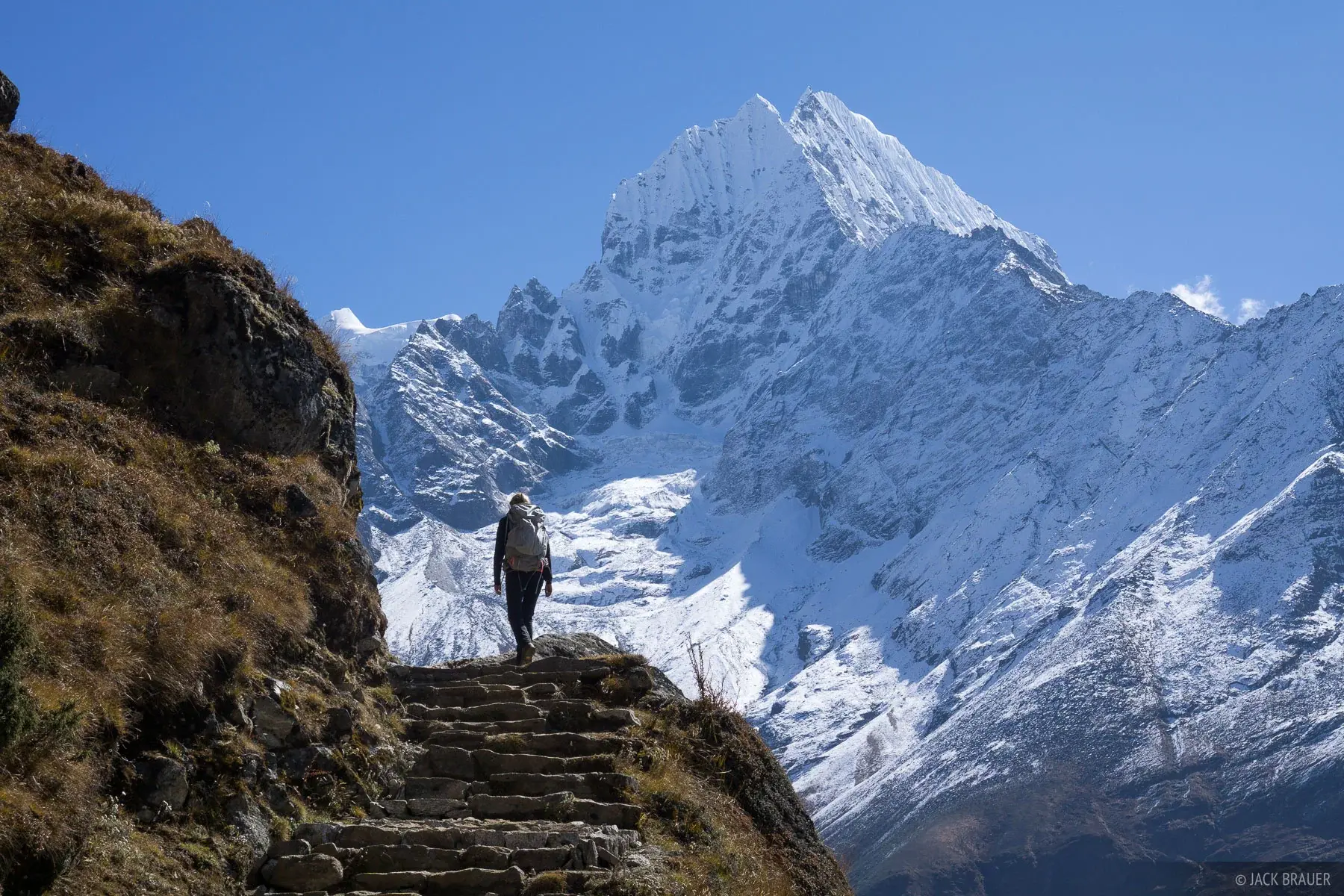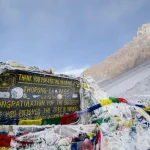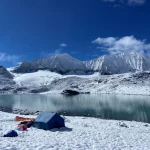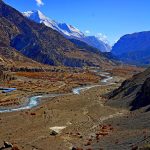How Long Does It Take to Climb Mount Everest from Base Camp?
Mount Everest, standing at 8,848.86 meters (29,031.7 feet), is the highest peak on Earth and a bucket-list challenge for mountaineers worldwide. Climbing Everest is not just a test of physical endurance but also a logistical and mental marathon, requiring meticulous preparation, acclimatization, and strategic timing. One of the most common questions asked by aspiring climbers is: How long does it take to climb Mount Everest from Base Camp? The answer is complex, as the timeline depends on multiple factors, including the route, weather conditions, climber experience, and the acclimatization process. This article explores the journey from Base Camp to the summit, breaking down the timeline, challenges, and key considerations for this monumental endeavor.
Overview of the Everest Climb
Climbing Mount Everest is not a sprint but a carefully orchestrated expedition that typically spans weeks, primarily due to the need for acclimatization to high altitudes. Most climbers approach Everest via one of two main routes: the South Col route from Nepal (starting at Base Camp at 5,364 meters) or the North Col route from Tibet (starting at Base Camp at approximately 5,150 meters). The South Col route is more popular, used by about 60-70% of climbers, due to its accessibility, established infrastructure, and slightly less severe weather compared to the northern approach. For the purposes of this article, we’ll focus primarily on the South Col route, as it’s the most commonly used, but we’ll also touch on the North Col route for comparison.
From Base Camp on the south side, climbers ascend through several camps (Camp 1, Camp 2, Camp 3, and Camp 4) before making a final push to the summit. The entire process, from arriving at Base Camp to reaching the summit and descending, typically takes 6 to 8 weeks, with the actual summit push lasting about 5 to 10 days from Base Camp, depending on conditions and individual pacing. Let’s break this down step by step.
The Timeline: From Base Camp to Summit
1. Arrival at Base Camp and Initial Acclimatization (1-2 Weeks)
Before climbers even begin their ascent from Base Camp, they must reach it, which involves a trek from Lukla (2,860 meters) to Everest Base Camp (EBC) in Nepal. This trek, covering about 65 kilometers, takes 8 to 12 days round-trip, allowing climbers to gradually adjust to increasing altitudes. Upon arriving at EBC, climbers typically spend 1 to 2 weeks acclimatizing to the 5,364-meter altitude. This period is critical to prevent acute mountain sickness (AMS), high-altitude pulmonary edema (HAPE), or high-altitude cerebral edema (HACE), all of which can be life-threatening.
During this time, climbers may undertake short hikes to higher altitudes (e.g., to nearby peaks like Kala Patthar at 5,644 meters) and return to Base Camp to sleep, following the “climb high, sleep low” principle. Some expeditions also involve an initial trip through the Khumbu Icefall to Camp 1 (6,065 meters) and back to Base Camp to familiarize climbers with the terrain and further acclimatize. This initial phase ensures the body adapts to lower oxygen levels, which drop significantly as altitude increases.
2. Acclimatization Rotations (2-4 Weeks)
The next phase involves acclimatization rotations, where climbers ascend to higher camps and return to Base Camp multiple times to build physiological resilience. This process typically takes 2 to 4 weeks and follows a structured pattern:
- Khumbu Icefall to Camp 1 (6,065 meters): The Khumbu Icefall is a treacherous section of shifting ice seracs and crevasses, requiring climbers to navigate ladders and fixed ropes. It takes 4 to 8 hours to reach Camp 1, depending on experience and conditions. Climbers may spend a night or two at Camp 1 before descending to Base Camp.
- Camp 1 to Camp 2 (6,500 meters): From Camp 1, climbers move through the Western Cwm, a relatively flat glacial valley, to Camp 2. This leg takes 3 to 5 hours. Climbers may spend a few nights at Camp 2 to acclimatize further.
- Camp 2 to Camp 3 (7,470 meters): The ascent to Camp 3, located on the Lhotse Face, is steeper and more technical, requiring fixed ropes. This climb takes 4 to 6 hours. Climbers typically touch Camp 3 (spending a few hours or a night) and return to Camp 2 or Base Camp.
- Optional: Camp 3 to Camp 4 (7,920 meters): Some expeditions include a brief trip to Camp 4 (South Col) during acclimatization, though this is less common due to the extreme altitude.
Each rotation strengthens the climber’s ability to function in low-oxygen environments. After completing 1-2 rotations, climbers return to Base Camp for rest, often spending 3 to 7 days recovering and waiting for a weather window for the summit push.
3. The Summit Push (5-10 Days)
The summit push is the culmination of weeks of preparation and typically takes 5 to 10 days from Base Camp to the summit and back, depending on weather, team pacing, and rest days. Here’s a typical timeline for the summit push:
- Day 1: Base Camp to Camp 1 (6,065 meters): Climbers ascend through the Khumbu Icefall to Camp 1, taking 4 to 8 hours. They rest overnight.
- Day 2: Camp 1 to Camp 2 (6,500 meters): The climb to Camp 2 through the Western Cwm takes 3 to 5 hours. Climbers spend 1-2 nights at Camp 2, depending on weather and team strategy.
- Day 3-4: Camp 2 to Camp 3 (7,470 meters): The ascent to Camp 3 on the Lhotse Face takes 4 to 6 hours. Climbers spend a night at Camp 3, often using supplemental oxygen for the first time due to the thin air.
- Day 4-5: Camp 3 to Camp 4 (7,920 meters): The climb to Camp 4 at the South Col takes 3 to 5 hours. This is a critical rest stop before the summit bid. Climbers arrive at Camp 4, rest for a few hours, and prepare for the summit push, which typically begins late at night (around 10 PM to midnight) to reach the summit by morning.
- Day 5-6: Camp 4 to Summit (8,848.86 meters) and Descent: The summit push is the most grueling part of the climb, taking 8 to 12 hours to ascend from Camp 4 to the summit. Climbers navigate the South Col, the Balcony (8,400 meters), the South Summit (8,750 meters), and the Hillary Step (a near-vertical rock face, though partially collapsed in 2015) before reaching the summit. The descent from the summit to Camp 4 takes 4 to 8 hours, and climbers may rest briefly at Camp 4 before continuing downward.
- Day 6-8: Descent to Base Camp: The descent from Camp 4 to Base Camp is faster, typically taking 2 to 3 days. Climbers move from Camp 4 to Camp 2 on the first day, then from Camp 2 to Base Camp the next day, navigating the Khumbu Icefall one final time.
4. Post-Summit and Departure (3-7 Days)
After reaching Base Camp, climbers rest for 1 to 3 days before trekking back to Lukla, which takes 2 to 4 days. The total time from Base Camp to summit and back to Lukla is thus 6 to 8 weeks, with the summit push itself accounting for roughly 5 to 10 days of active climbing.
Factors Affecting the Timeline
Several factors influence how long it takes to climb Everest from Base Camp:
- Weather Conditions: Everest’s climbing season is primarily mid-April to late May, when the jet stream moves away, reducing wind speeds in the “summit window.” Poor weather can delay the summit push by days or even weeks, as climbers wait at Base Camp or higher camps for clear conditions.
- Climber Experience and Fitness: Experienced climbers with prior high-altitude experience (e.g., on peaks like Denali or Aconcagua) may move faster through the camps, while novices may require more time for acclimatization and rest.
- Team Size and Logistics: Commercial expeditions, which dominate Everest today, often have fixed schedules and larger teams, leading to slower movement due to bottlenecks, especially in the Khumbu Icefall and on summit day. Private or smaller teams may be more flexible but face higher costs.
- Acclimatization Strategy: Some climbers use pre-acclimatization techniques (e.g., hypoxic tents at home) to reduce time spent at Base Camp, though this is less common. The number of rotations also varies by expedition operator.
- Route Choice: The North Col route from Tibet is slightly faster in terms of summit push (4-8 days) due to a less technical approach to Camp 1, but it involves harsher weather and stricter permitting processes, making overall expedition timelines similar.
- Supplemental Oxygen: Most climbers use supplemental oxygen above Camp 3, which boosts energy and speeds up the summit push. Those climbing without oxygen (a rare feat) require longer acclimatization and slower ascents, often extending the summit push by 1-2 days.
- Crowding and Fixed Ropes: Everest’s popularity has led to overcrowding, particularly on summit day, with queues forming at bottlenecks like the Hillary Step. In 2019, photos of long lines went viral, highlighting delays that can add hours to the summit push.
Challenges and Risks
Climbing Everest is inherently dangerous, with a death rate of about 1-2% per expedition (though this varies by year). Key challenges that affect the timeline include:
- Khumbu Icefall: This unstable glacier is one of the most dangerous sections, with risks of avalanches and crevasse falls. Climbers aim to cross it early in the morning when it’s more stable, but delays can occur due to ladder repairs or weather.
- Altitude Sickness: Even with acclimatization, altitude-related illnesses can force climbers to descend or delay their ascent, extending the timeline.
- Weather Windows: Summit attempts are often aborted if winds exceed 30-40 mph or if storms approach, requiring climbers to wait or retreat to lower camps.
- Physical and Mental Fatigue: The extreme altitude, cold (temperatures can drop to -40°C), and long durations of exertion test even the fittest climbers, slowing progress.
Comparison: South Col vs. North Col Route
While the South Col route is more popular, the North Col route from Tibet offers a different experience. The North Col Base Camp (5,150 meters) is accessed by vehicle, eliminating the need for a long trek. The summit push timeline is similar (4-8 days), but the route involves:
- A less technical ascent to Camp 1 (7,000 meters), but harsher weather due to exposure on the north face.
- Fewer climbers, reducing bottlenecks but also infrastructure (e.g., fewer fixed ropes).
- A steeper final summit ridge, increasing physical demands.
Overall, the North Col route may save 1-2 days on the summit push but requires similar acclimatization time, making the total expedition duration comparable (6-8 weeks).
Speed Records and Exceptions
While most climbers take weeks, elite mountaineers have set astonishing speed records. For example:
- Kilian Jornet (2017): Summited Everest twice in one week without supplemental oxygen, with one ascent from Base Camp to summit in 26 hours (South Col route).
- Lhakpa Sherpa (2000): Holds the women’s speed record, climbing from Base Camp to summit in 29 hours and 40 minutes.
- Pemba Dorje Sherpa (2004): Set the fastest ascent from Base Camp to summit in 8 hours and 10 minutes (South Col route, with oxygen).
These records are outliers, achieved by superhuman athletes with exceptional acclimatization and minimal rest. For the average climber, such timelines are neither feasible nor safe.
Practical Considerations for Aspiring Climbers
If you’re considering climbing Everest, here are key points to keep in mind:
- Cost: Commercial expeditions cost $30,000 to $100,000, covering permits, guides, Sherpa support, oxygen, and gear. Budget additional funds for training and travel.
- Training: Prepare for 1-2 years with high-altitude climbs, strength training, and cardiovascular endurance. Prior summits on peaks like Kilimanjaro (5,895 meters) or Denali (6,190 meters) are recommended.
- Permits and Timing: Nepal issues permits ($11,000 per person) for the spring season (April-May). Book with a reputable operator 1-2 years in advance.
- Health Risks: Consult a doctor specializing in high-altitude medicine and ensure you’re fit for extreme conditions.
- Environmental Impact: Everest faces issues like overcrowding and littering. Choose operators committed to sustainable practices.
Conclusion
Climbing Mount Everest from Base Camp is a journey that typically takes 6 to 8 weeks, with the summit push itself spanning 5 to 10 days. The timeline is shaped by the need for acclimatization, weather conditions, route choice, and individual factors like fitness and experience. While the South Col route is the most popular, offering a structured ascent through iconic landmarks like the Khumbu Icefall and South Col, the North Col route provides an alternative with its own challenges. For most climbers, the Everest expedition is a once-in-a-lifetime endeavor requiring immense preparation, resilience, and respect for the mountain’s dangers.
Aspiring climbers must weigh the physical, financial, and emotional demands of this challenge. While speed records inspire awe, the average climber’s journey is a slow, deliberate process, balancing ambition with safety. Whether you dream of standing on the “roof of the world” or simply seek to understand the feat, the climb from Base Camp to Everest’s summit remains one of humanity’s most extraordinary undertakings.








